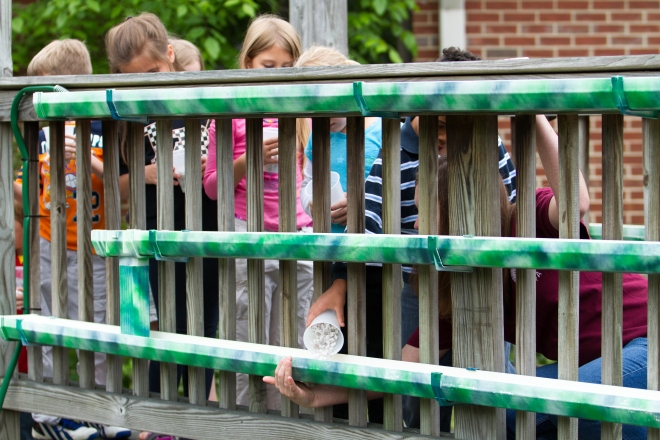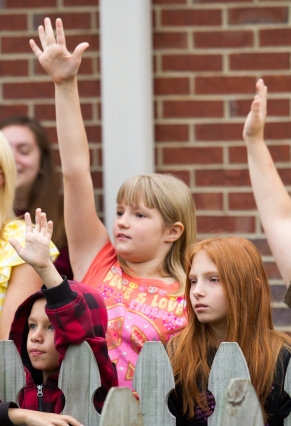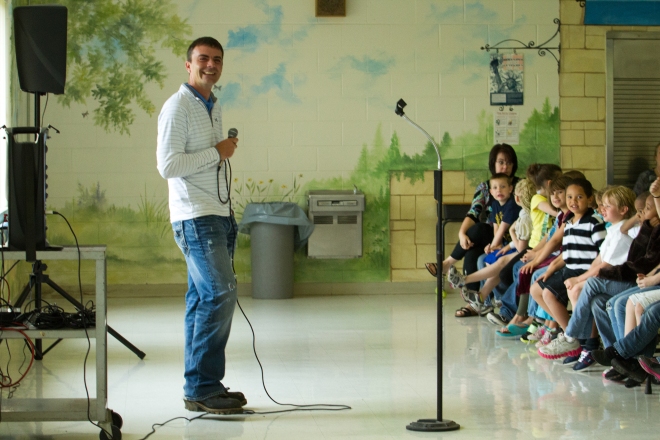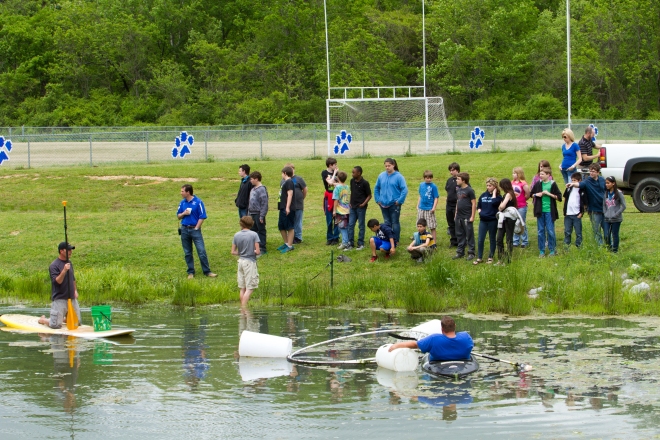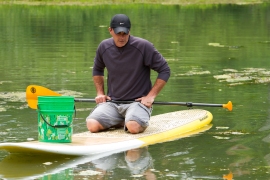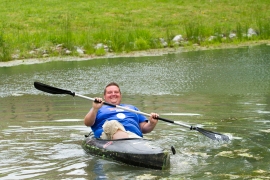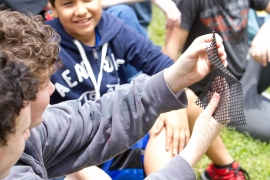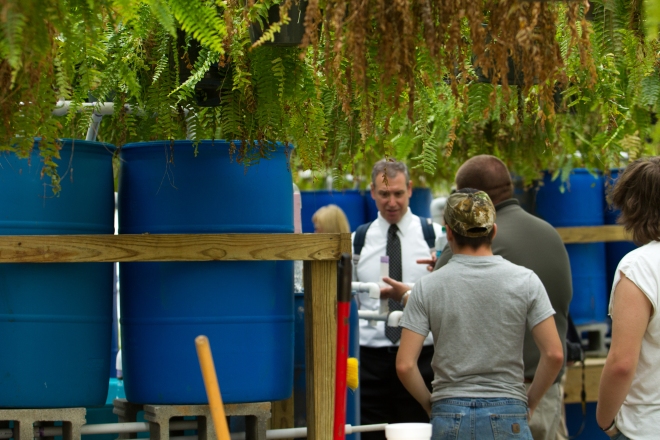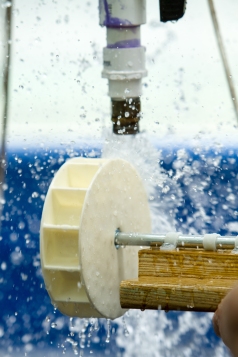We had an exciting STEM Day, the celebration in Georgia of Science, Technology, Engineering and Math in the Georgia School System. HATponics participated in STEM Day through the unveiling of sustainable agriculture implementations in four Walker County Schools. Our day started with Gilbert Elementary, where an aquaponics system created from repurposed rain gutters was installed into an already existent fish pond. The system will be used to grow strawberries which will then be donated to the CARE Foundation.
Our next stop was Rossville Elementary where an Aquaponics system now runs the entire length of the school cafeteria. Ryan presented the students with a lesson on sustainable growing practices and the importance of caring for our environment and we will return on Monday with plants and fish to make the system operational. The students expressed overwhelming enthusiasm at the idea of being able to watch their food grow in the same room they eat in every day. The clear majority preference of food to grow was strawberries, except for an adamant group of third graders who demanded basil, and one fifth grader who wanted to plant a fig tree.
The next school was Rossville Middle School, who received our first HATcages, floating enclosures for free range cat fish with minimal environmental impact while providing easy harvesting.
Finally, we stopped at Ridgeland Highschool where a huge aquaponics greenhouse is already in place, as we have been working with them for the last year.
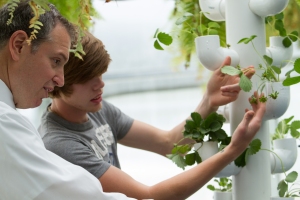
Tyler Mooneyham shows Channel 3 News the strawberry growing tower he helped design. These growing towers allow for twelve strawberry plants in the space of one.
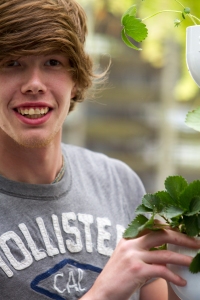
Tyler just won the state Future Farmers of America competition for his comparison of aquaponic and hyroponic growing techniques.
One of the questions we got asked from a younger grade was, “when we go on and leave this school will we be able to come back and visit our gardens?” And it was wonderful to be able to tell them not to worry, because aquaponics will accompany them at all grade levels, making Walker County, Georgia the first school system in America to have aquaponics be a part of their curriculum all the way from kindergarten to college. We hope that many other counties follow suit and that every child in America has the opportunity to learn ways to grow their own food in sustainable methods. The deeper implications are that kids who grow up around sustainable agriculture will continue to embrace it and it will remain part of their lives forever. Many students today do not even know where their food comes from, kids from another school we visited once said they would like to grow pizza and peanut butter and jelly sandwiches. By educating children early on, we are preparing them to be our farmers of tomorrow, and helping them to discover ways to do so ethically with environmental consciousness.

